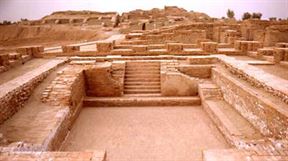
How to prepare for Ancient History for Civil Service Exam
Also See Article: Revision for Civil Service Exam – The Doorway to Success
Ancient History starts from the earliest time to the middle of 8th Century AD. For understanding about the evolutionary process of history, starting from this phase is a must and hence, it has been added in the syllabus of UPSC CSE Preliminary exam as well as in Mains.
Though on an average, around 4-5 questions are asked from Ancient History but if you add up the part of culture to it, the total number of questions reaches to 8-10. And in an exam where each mark counts, ancient history becomes all the more important.
Preparation Strategy: The best way to prepare this part is in phases or periods. Furthermore, connecting the socio-political and economic climate of the time period is necessary.
The most important topics to be prepared are-
Also See Article: Principles of Ethical Governance – GS PAPER IV for UPSC CSE Preparation
PREHISTORY:
Stone Age- 1st stage of human civilisation, basis of the classification of Prehistoric period. The means of livelihood of people like hunting, domestication of animals, tools in use, metals known etc.
Chalcolithic Age– Bronze age, Indus Valley civilisation-origin, development, decline and socio-political conditions. Important Harappan sites and its significance. Example: Mohenjodaro, Harappa and others. Script and language used during IVC.
Vedic Age– Vedic literature, Upanishads,Indian Philosophy, Polity, Society, customs, family, marriage, status of women, caste system. Economic Life and Political Organisation, Culture and Religion, Similarities with contemporary tradition and religion.
Post Vedic Age– 600-400 BC: Rise of new religions- Jain and Buddhism; the Mahajanpadas, 2nd phase of Urbanisation.Reasons for the growth of such religious movements, the changes brought to the society after these.
Buddha and Mahavira -their beliefs, contributions, teachings. Types of Buddhism – Hinayana, Mahayana and Vajrayana (their beliefs and differences among them). Two Sects of Jainism – Svetamabara and Digambara; Ajivikas. Differences between Jainism and Buddhism, their propagation, and spread to far away lands.
Mauryan Period: 200 BC-300 CE
Important sites and their contribution to the society, art and culture developments by invasion of foreigners like Shaka, Kushanas and Parthians. Kanishka’s contribution to the development of Buddhism. Indo-Roman trade, ChandraguptaMaurya, Ashoka, Dhamma, Edicts, etc.
In Upper South (Deccan) and Far South: Chola, Chera and Pandyas, the combination of Sanskrit and Tamil literature.
Gupta Period (300-550 CE): The debate of golden age, Aryabhatta, Panchatantra, Kalidasa etc.
Post Gupta Period (550-750 CE): HarshaVardhana, Nalanda University, Huen Tsang.
South was the hub of activities during this time: Early Chalukyas of Banami or Vatapi and Pallava kings and Bhakti movement in Tamil nadu by Alvars and Nayanars.
Also See : UPSC Exams
Type of questions asked:
Q1. In the context of cultural history of India, a pose in dance and dramatics called ‘Tribhanga’ has been a favourite of Indian artists from ancient times till today. Which one of the following statements best describes this pose?
(a) One leg is bent and the body is slightly but oppositely curved at waist and neck.
(b) Facial expressions, hand gestures and make-up are combined to symbolize certain epic or historic characters.
(c) Movements of body, face and hands are used to express oneself or to tell a story.
(d) A little smile, slightly curved waist and certain hand gestures are emphasized to express the feelings of love or eroticism.
Also See Article: Indian Polity Civil Services Exams GS Paper II Preparation Tips
Q 2. With reference to the history of philosophical thought in India, consider the following statements regarding Sankhya school:
1. Sankhya does not accept the theory of rebirth or transmigration of soul.
2. Sankhya holds that it is the self-knowledge that leads to liberation and not any exterior influence or agent.
Which of the statements given above is /are correct?
(a) 1only
(b) 2 only
(c) Both 1 and 2
(d) Neither 1 nor 2
Q 3- The religion of early Vedic Aryans was primarily of
(a) Bhakti
(b) Image worship and Yajnas
(c) Worship of nature and Yajnas
(d) Worship of nature and Bhakti
Also See : UPSC Exam Dates
Sources: Exhaustive and authentic source list is given for those who are already in touch with or have an idea about History as a subject. Moreover, those with history optional will be immensely benefited by this book list.
1. Ancient India (NCERT) by Prof. R.S. Sharma
2. The Wonder that was India by A.L. Basham
3. Ancient India – An Introductory Outline by D.N. Jha
4. History of India, Vol. I by RomilaThapar
5. Aspects of Political Ideas and Institutions in Ancient India
6. Material culture & Social Formation in Ancient India by R.S. Sharma
7. Indian Feudalism by R.S. Sharma
8. Ashoka & Decline of the Maurya Romila Thapar
9. A History of South India by K.A. Nilkantha Sastri
10. Ancient India and Indian Archaeology – Archaeological Survey of India
However, for those with no background in History and less time, not only are these books too complicated but also have a less than happening cost benefit ratio. The best way to go about Ancient History is to brush up by going through-
Old class 6th NCERT of History
Old class 11th NCERT of History
Class 11th NCERT of Fine Arts
Read Newspaper: For being in touch with new Historical Sites being found, archaeological discoveries and the changing perspective and reasoning of Historians.
For being a good administrator, being aware about one’s past is very important. And as Milan Kundera says, "People are always shouting they want to create a better future. It’s not true. The future is an apathetic void of no interest to anyone. The past is full of life, eager to irritate us, provoke and insult us, tempt us to destroy or repaint it. The only reason people want to be masters of the future is to change the past.”
Happy Preparation!
Author: Anushka Mishra
(C) SuccessCDs.net